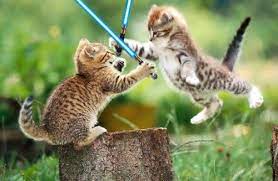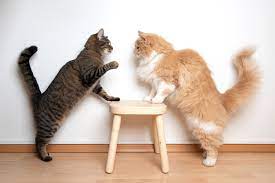I don’t write many actual fight scenes, but those who write fantasy, adventure, mystery or thriller often do. Make those fights irresistible to readers with these tips.
Writing Tip for Today: A few more tips for effective fight scenes:
Change It Up
Whether you write actual fights or verbal/emotional scraps, your readers will want variety. Keeping readers guessing “What happens next?” is one of the basic drivers of good fiction. If every scene you write starts out the same, uses the same tactics, weapons or environment, readers will begin to predict what happens next.
To vary your fight scenes, think of places where a fight scene doesn’t usually occur and set it there. If every scene is at the same location, with the same characters, readers will quickly realize that the characters aren’t in a believable world. You don’t want readers thinking that every time a fight breaks out, the characters always happen to be alone or in a place without witnesses.
Think creatively and set fights in unusual places—some of the best fights occur when neither character can escape. An elevator stuck between floors, a moving train, an airplane—all have been used by movies to create a higher sense of urgency. Your fight scene will be more effective if you change up the elements and box in your characters.
No Fair Fight
The boxed-in idea can go further if you allow your protagonist to go into any fight at a disadvantage. Readers love to root for an underdog who comes from behind. If in every altercation your hero or sheroe easily wins the smack-down, readers can conclude that the bad guys aren’t worthy.
When you send your character into battle with everything needed to vanquish the enemy, the stakes automatically lower if that character doesn’t have some sort of disadvantage. Think jammed guns and arrows that misfire. Inexperience can be a powerful disadvantage in any fight. Remember Luke Skywalker as he figures out how to be a Jedi?
The disadvantage you put on your character also helps raise the story and scene stakes. A character who must fight with a hand tied behind his back is more exciting. An injured protagonist who grits his teeth and gives it her all captures readers’ imaginations and raises stakes.

Give your character a disadvantage in a fight.
Spotlight on Emotion
Through all of your fight scenes, the most important element is emotion. You want your readers on the edges of their seats. Make em wonder who will win. How? Emotion. Some writers try to focus fight scenes by showing the exterior action. That’s fine, but readers crave the emotional ups and downs of a fight.
Focusing a fight on what your character feels and thinks as the battle rages keeps the fight centered on your protagonist. This humanizes your character and gives readers more reason to experience vicariously every bone-crunching moment. Readers get to participate, by turns feeling fear or elation, thinking “all is lost” or processing internally the blows.
If your fight is physical, you also want to inflict pain and let readers experience that too. Tell readers he/she suffers a body blow and OK, that’s nice. But describe the pain your character goes through—burning, stabbing, ripping pain—and the focus shifts from outside to inside, where the bounty of emotion grabs readers and doesn’t let go.





